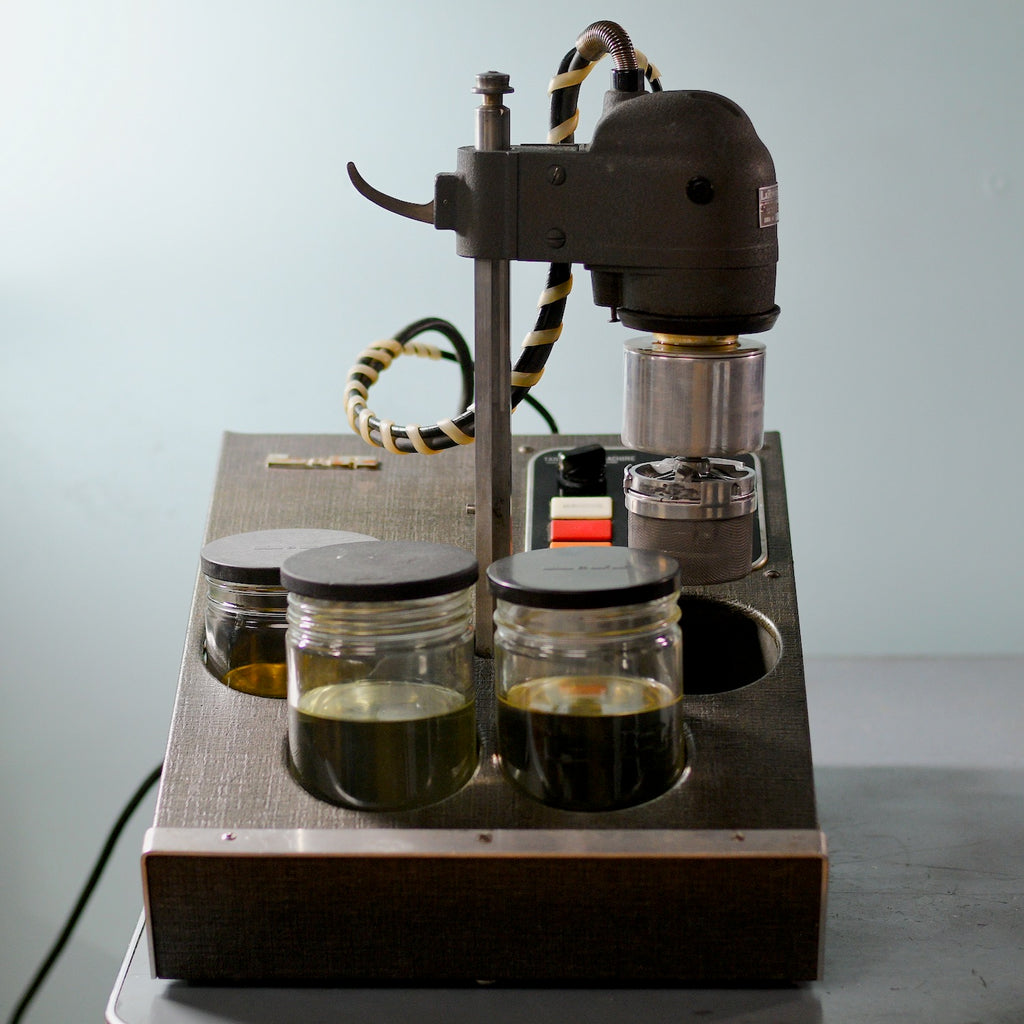From the Bench: Workshop Tools—Cleaning Machine

There is a lot that goes into building a watchmaking workshop, and many of the tools that we use are extremely cool. Today I’m going to introduce you to our first tool of note: the cleaning machine.
A good ultrasonic cleaning machine is vital to proper modern watchmaking service. They all operate on the same general principles, but there is a vast range of options at different price points. Brand-new industrial-capacity machines can cost as much as a new car, while a vintage machine might just cost as much as a really nice dinner. The differences mostly come down to the level of automation involved.

Since I’m running a one-person workshop, a manually-run machine is just fine. Meet our cleaning machine, the L&R Console.
L&R is an American company with a long history of manufacturing ultrasonic cleaners for a variety of industries. Many vintage machines on the secondary market are L&Rs, and they work wonderfully. Their ultrasonic watch cleaning and rinsing solutions are likewise a standard in the industry.
The Console dates from the middle of the 20th Century and was produced for many years during the height of American watchmaking, before the Quartz Crisis. It is a manually-run machine that requires an operator to time their own cleaning cycles and move the watch between solutions.

Unlike modern solid-state machines, the Console uses an enormous vacuum tube to generate the ultrasonic frequency required to properly clean parts. This is old-school, but that doesn’t mean it’s not also extremely effective.

Ultrasonic waves from the generator are emitted by the transducer in the head of the cleaning machine, which resonate through the cleaning baskets and the cleaning liquid itself. These extremely high frequency waves form miniscule voids in the solution, which collapse inward with a huge amount of localized force.

Think “scrubbing bubbles” but powered by a red-hot vacuum tube. Ahem. Sorry, I get excited by vacuum tubes. They’re just that cool.

Together with the ultrasonic waves, the parts are also swished back and forth to properly circulate and agitate the cleaning solution. The results are a sparkly-clean movement. Different machines use different cycles, but all go from cleaning to rinsing to drying.
In watchmaking, we use purely petroleum-based cleaning and rinsing solutions. Not only do these solutions effectively dissolve oils and greases, but they strip away any traces of moisture from the metal. For watches that have been exposed to any amount of moisture, this is a lifesaver. It stops rust from even getting started.
A cleaning machine isn’t a shortcut to a clean movement, however. Every jewel is painstakingly hand-cleaned with pegwood before going in the machine—there’s just no replacement for a good physical scrub.

Likewise, the escapement must be manually pegged and cleaned in a soft pithwood to remove any trace of old oils and greases. The mantra is “every pivot, every time.” This takes longer, but we believe in doing things the right way, not the fast way.
There are more interesting tools to come, so stay tuned!
